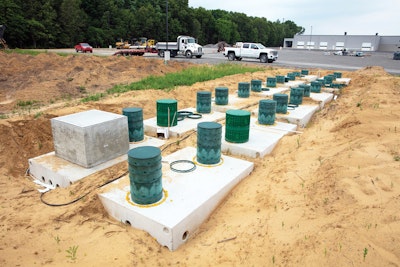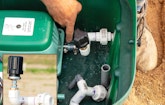
Will Stoddard (center), of SludgeHammer, instructs Miller (left) and operator Luke Mullet of Quality Excavating how to install the aerobic bacterial generators.
An RV manufacturer needed an approved onsite design before constructing a new factory in Middlebury, Indiana. The architect and engineering firm hired Stuart Meade, owner of Meade Septic Design in nearby Goshen for the project.
Based on 250 employees, the state Department of...









